The saltwater aquarium hobby has seen huge blooms after the release of Disney’s “Finding Nemo” in 2003 and again with “Finding Dory” in 2016. Many movie-goers want to take a real live Nemo or Dory home for their own aquarium but don’t realize what that actually involves. So, what do you need to take your favorite animated fish home without becoming a Darla?
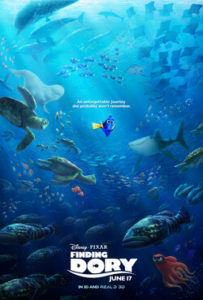
© 2016 Disney/Pixar. All Rights Reserved.
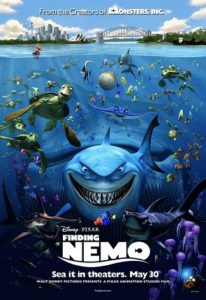
© 2003 Disney/Pixar. All Rights Reserved.
The fish and other sea creatures featured in these movies are, first and foremost, saltwater animals. That means they need a saltwater aquarium. This isn’t as easy as putting some table salt in your home aquarium. The water has to be mixed to the correct levels (Specific Gravity 1.020-1.024) in a separate container before being added to the aquarium. Most of these creatures are also tropical, which means the tank needs a heater to maintain warm water temperatures (75-80 degrees F). The décor of saltwater tanks is usually different than freshwater as well; unfortunately, ornaments like Mount Wannahockaloogie just don’t work very well in saltwater aquariums. Most saltwater aquariums use natural crushed coral substrates and live rock although non-animated decorative ornaments are usually safe. For more information of basic aquarium care, visit our Saltwater Aquarium Basics Guide.
So what about the fish and other animals? Some of the movies’ characters are obviously impossible and even illegal to keep in home aquariums. Others are very difficult while some are very common and easy for hobbyists to care for. We are only going to discuss those characters here that are within the scope of our hobby.
( ❶ “Finding Nemo”, ❷ “Finding Dory”)
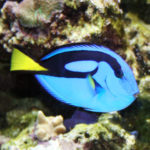
Hippo Tang (Paracanthurus hepatus)
“Dory” and her parents: Hippo Tang (Paracanthurus hepatus) ❶ ❷
Max Size: 12”
Minimum Tank Size: 150 gallons
Difficulty: Moderate
The Hippo Tang is a fairly delicate fish with a weak immune system. They also grow too large for many aquariums. Although tempting, only experienced aquarists with larger, established aquariums should attempt this fish. Like other tangs, Hippo Tang can become very territorial and only one should be kept per tank.
For more information on keeping Hippo Tangs, visit our Tangs & Surgeonfish Care Guide.
“Nemo” and “Marlin”: Clownfish (probably Amphiprion ocellaris) ❶ ❷
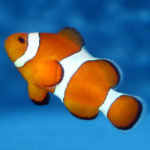
Ocellaris Clownfish (Amphiprion ocellaris)
Max size: 4”
Minimum Tank Size: 20 gallons
Difficulty: Easy
We could debate about exactly which kind of clownfish are featured in these movies, but they are probably Ocellaris Clownfish. Percula Clownfish are also very similar in care and appearance (they just develop thicker black margins). Clownfish like these are some of the easiest saltwater fish to keep and can be kept in much smaller aquariums than many of their costars. Captive-bred fish are much hardier and better for the environement than their wild counterparts. Their anemone home is much more delicate however and has some much more intensive requirements. Most clownfish – especially captive-bred – don’t need an anemone to be happy and healthy.
For more information on keeping Clownfish, visit our Clownfish Care Guide and Clownfish and Anemone Preference Guide.

Common Octopus (Octopus vulgaris)
“Hank”: Octopus (Octopus sp.) ❷
Max Size: Depends on species
Minimum Tank Size: 30 gallons for small species
Difficulty: High
Octopus are very specialized and difficult to care for and need a specially built aquarium to keep them from escaping like Hank so often does in “Finding Dory”. They will also eat almost any tankmates they are kept with. Only expert aquarists should attempt an octopus.
“Gill”: Moorish Idol (Zanclus canescens) ❶
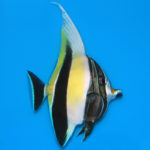
Moorish Idol (Zanclus canescens)
Max Size: 7”
Minimum Tank Size: 75 gallons
Difficulty: High
Although not as delicate now as they were even when “Finding Nemo” was first released, Moorish Idols are still difficult to maintain for long. It is difficult to keep these fish healthy through collection and it can be tricky to get them to eat in home aquariums. It is best to stick with hardier lookalikes like the Longfin Bannerfish (Heniochus sp.) for new or novice aquarists.
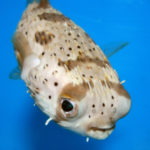
Porcupine Puffer (Diadon holocanthus)
“Bloat”: Porcupine Puffer (Diodon holocanthus) ❶
Max Size: 20”
Minimum Tank Size: 200 gallons
Difficulty: Easy to Moderate
Although these puffers are usually only a few inches in length when they are sold for aquariums, they can grow to almost 2 feet long! Puffers also have very strong beak-like teeth and can crush through shells. Unfortunately, most of his tankmates in Dr. Sherman’s office wouldn’t have survived being kept with a puffer. Puffers “blow up” as a stress reaction and, while comical to us, this is very stressful and even dangerous to the puffer and should NEVER be provoked for any pufferfish.
“Peach”: Starfish ❶
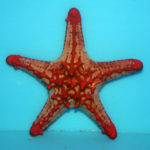
Red Knobbed Starfish (Protoreaster lincki)
Max Size: Depends on species
Minimum Tank Size: Depends on species
Difficulty: usually Easy
It is difficult to tell exactly what kind of starfish Peach is but most of the thick-bodied starfish like her are fairly easy. However, most of these also eat snails and other inverts so use caution when choosing your starfish and its tankmates. They are sensitive to water quality and changes in water quality so make sure the tank stays clean and stable.
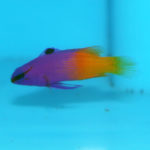
Royal Gramma Basslet (Gramma loreto)
“Gurgle”: Royal Gramma Basslet (Gramma loreto) ❶
Max Size: 4”
Minimum Tank Size: 30 gallons
Difficulty: Easy
Royal Grammas are colorful fish found in the Caribbean and western Atlantic Ocean, unlike the Pacific homes of most of the other fish in the movies. They are hardy and easy to keep, but can be territorial. Only keep one basslet in the aquarium unless it is very large with lots of rockwork.
“Bubbles”: Yellow Tang (Zebrasoma flavescens) ❶

Yellow Tang (Zebrasoma flavescens)
Max Size: 8”
Minimum Tank Size: 75 gallons
Difficulty: Easy
Yellow Tangs like Bubbles were some of the first to be kept by home aquarists and are still some of the most popular. They are hardier than tangs like the “Dory” Hippo Tang but are also more aggressive. Once they establish a territory, they will not tolerate other tangs – or possibly even any other fish – entering it. Only keep in a large tank without any other closely-related tangs or closely-colored fish.
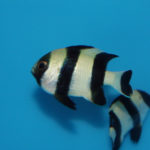
4-stripe Damsel (Dascyllus melanurus)
“Deb”: 4-stripe Damsel (Dascyllus melanurus) ❶
Max Size: 3”
Minimum Tank Size: 30 gallons
Difficulty: Easy
Damsels like Deb are some of the hardiest and easiest saltwater fish to keep. They are usually recommended as the first fish for any saltwater hobbyists to attempt. Most damsels can get very territorial however so make sure the tank isn’t overcrowded and there is plenty of territory for these fish. The 4-stripe Damsel specifically is one of the milder-tempered of all damselfish.
“Jacques”: Skunk Cleaner Shrimp (Lysmata amboinensis) ❶
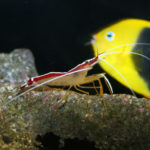
Skunk Cleaner Shrimp (Lysmata amboinensis)
Max Size: 3”
Minimum Tank Size: 20 gallons
Difficulty: Easy
Like Jacques, shrimp like these will clean parasites and dead scales off of other fish, but they will also eat almost any other food they are given. They are some of the easiest shrimp to keep but, like the starfish, need stable and pristine water quality. Shrimp molt their shell to grow so it is common to find an empty shell every now and then. Don’t keep with predatory fish (like pufferfish, for example) as shrimp are often easy prey.
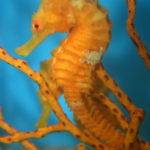
Seahorse (Hippocampus sp.)
“Sheldon”: Seahorse (Hippocampus sp.) ❶❷
Max Size: Depends on species
Minimum Tank Size: at least 30 gallons for most species
Difficulty: Moderate to High
Seahorses are easy now than years ago and captive-bred seahorses are becoming more and more available. They are still very delicate though and keeping them with any other tankmates is difficult. It is best to keep them in a seahorse-only tank and by advanced aquarists only.
“Tad”: Yellow Longnose Butterfly (Forcipiger flavissimus) ❶❷
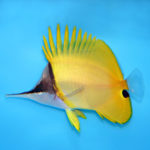
Yellow Longnose Butterfly (Forcipiger flavissimus)
Max Size: 9:
Minimum Tank Size: 100 gallons
Difficulty: Moderate
Because of their very thin “beaks”, it can be difficult to get these fish to eat in home aquariums. They need small food items at least once or twice a day. They may also eat some corals as well as the tubed feet from starfish and sea urchins.
These characters are just a few of the sea creatures that Disney’s revolutionary “Finding Nemo” and “Finding Dory” franchises have brought to the forefront of the both the aquarium hobby and pop culture, but they are the most suitable for aquarium life. If you choose to bring any of these movie stars into your home, choose carefully so you can give them the best home possible. Remember, as Bruce and his crew have taught us, “Fish are friends”!
© “Finding Nemo”, “Finding Dory” and all the characters within are created by and property of The Walt Disney Company.
 That Fish Blog – Aquarium Advice and Information
That Fish Blog – Aquarium Advice and Information
